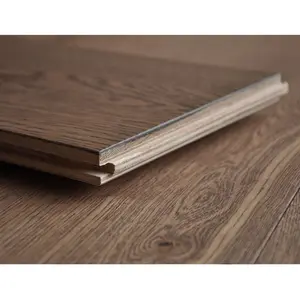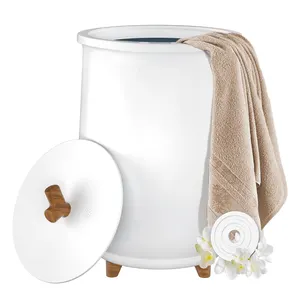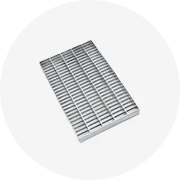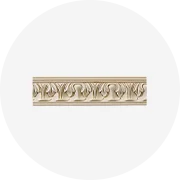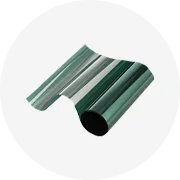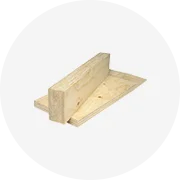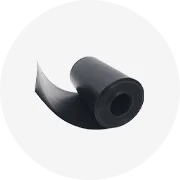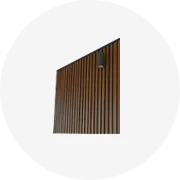Popular na sua indústria






Goodmax lâmina de barbear descartável, para homens, de aço inoxidável, alta qualidade, para homens
€ 0,0838
Pedido Mínimo: 100000 Pacotes


Lâmina de barbear masculina, lâmina com borda dupla para cuidados com a pele
€ 0,0373 - € 0,0466
Pedido Mínimo: 5 Peças




Cartuchos de depilação de aço, recarga de asr para 5 camadas e 5 lâminas de lâmina
€ 0,5117 - € 0,8001
Pedido Mínimo: 500 Peças




M5 5 + 1 Lâmina Venda Quente Navalha De Aço Inoxidável Importado Personalizado 5 Lâmina De Barbear Para Homens
€ 0,6327 - € 0,7164
Pedido Mínimo: 5 Peças



Lâminas de barbear premium, lâminas de aço inoxidável com borda dupla para barbear limpo
€ 128,39 - € 134,90
Pedido Mínimo: 2 Caixas







Xinli carburador de tungstênio para corte, lâmina de tungstênio e precisão, oem/mm
€ 4,66 - € 23,26
Pedido Mínimo: 5 Peças

- 10%






Lâminas de barbear afiadas profissionais aqiabi, lâminas de 17.5cm para desbaste, corte de cabelo com 10 peças de lâminas z6100
Pronto para enviar
€ 1,47 - € 2,17
Pedido Mínimo: 1 Peça
Envio por peça: € 6,89










Lâminas De Corte De Cabelo desbaste Tipo Pena-Corte de Barbear Inoxidável (platina)
€ 2,80 - € 4,66
Pedido Mínimo: 300 Pacotes

Pente modelador de desbaste corte de cabelo, alça de plástico com 2 lâminas de lâmina
€ 0,6978 - € 0,8373
Pedido Mínimo: 100 Peças






Pente de lâmina de penteado para casa, faça você mesmo, lâminas de corte para salão de beleza, cabeleireiro
€ 0,2512 - € 0,5582
Pedido Mínimo: 100 Peças
Buscas Relacionadas:



Lâminas de cabeleireiro para lâminas, substituível, cortador para barbeiro, lâmina de sobrancelha
Pronto para enviar
€ 0,1117 - € 0,1861
Pedido Mínimo: 20 Peças
Envio por peça: € 0,5954






Lâminas de barbear com borda dupla removível, pente desbaste profissional para aparar corte de cabelo
Pronto para enviar
€ 0,2047 - € 0,3722
Pedido Mínimo: 100 Peças
Envio por peça: € 0,4559






Navalha de barbear profissional, navalha desbaste segura para estilização de cabelo com lâmina única
€ 9,31 - € 11,17
Pedido Mínimo: 50 Conjuntos






Alta Qualidade Fina Navalha Dedo Anel Shapers Cabelo Extra Dois Lâmina de Qualidade premium com Caixa de Aço Inoxidável Lâmina Substituível
€ 0,9304 - € 1,40
Pedido Mínimo: 10 Unidades












Lâminas de cabelo, lâminas de dedo para cabelo, anel de dedo, aço inoxidável, design exclusivo, para salão de beleza, para cabelo
€ 2,10 - € 2,56
Pedido Mínimo: 50 Peças






Lâmina de barbear para substituição, lâminas de substituição para estilização de cabelo, lâmina de barbeiro em aço inoxidável, cores personalizadas
€ 0,6978 - € 1,35
Pedido Mínimo: 20 Peças






Escova para corte de cabelo, pente preto com lâminas de barbear, aparador de desbaste, ferramentas de estilo faça você mesmo
€ 0,2791 - € 0,335
Pedido Mínimo: 3 Peças






Lâminas de corte de cabelo, navalhas de aço para cabeleireiro, ferramentas de desbaste, lâminas de barbear c0001a, 10 peças
Pronto para enviar
€ 1,35
Pedido Mínimo: 3 Peças
Envio por peça: € 1,93






Escova de cabelo para salão de beleza, pente profissional de plástico com borda dupla para barbeiro e aparador de desbaste
€ 0,1303 - € 0,2791
Pedido Mínimo: 10 Peças






Clássico cabelo aço corte lâminas barbeiros salão desbaste ferramentas barbear lâminas
€ 2,79 - € 5,58
Pedido Mínimo: 100 Peças






Profissional Hair Styling Desbaste Texturização Navalha Pena De Corte + 10 Lâminas De Substituição
€ 1,87 - € 2,56
Pedido Mínimo: 10 Peças






Logotipo personalizado Profissional Barbearia cabeleireiro Navalhas Cut Hair Cutting Thinning beleza salão lâmina
€ 1,31 - € 1,49
Pedido Mínimo: 3 Peças






Escova para corte de cabelo, pente preto com lâminas de barbear, ferramenta de estilo de salão de beleza para desbaste
€ 0,4187 - € 0,9304
Pedido Mínimo: 12 Peças




Lâmina de barbear substituível styling lâmina reta navalha desbaste cabelo cabeleireiro lâminas
€ 6,20 - € 6,26
Pedido Mínimo: 1000 Lâminas






Pente de barbear pequeno duplo com logotipo personalizado, lâmina ajustável, conjunto portátil de corte e desbaste, máquina de cortar cabelo, pente de plástico
Pronto para enviar
€ 0,1861 - € 0,9304
Pedido Mínimo: 20 Peças
Envio por peça: € 4,30






Pente de corte para barbeiro, lâmina de barbear dupla borda, aparador de desbaste, pente dupla face de plástico fino

€ 0,3722
Pedido Mínimo: 12 Peças
Envio por peça: € 1,25






Escova de cabelo preta com lâmina de barbear, pente desbaste para corte de cabelo para salão de beleza, ferramentas de estilo diy, 1 peça
Pronto para enviar
€ 0,5675 - € 1,13
Pedido Mínimo: 3 Peças
Envio por peça: € 3,13






Barbeador elétrico masculino, barbeador elétrico recarregável por usb, à prova d'água
Pronto para enviar
€ 2,01 - € 2,41
Pedido Mínimo: 20 Peças
Envio por peça: € 1,90






2023 Straight Edge Barber Thinning Navalha Lâmina de aço inoxidável Men's Hair Shave Hairdressing Razors
€ 2,10 - € 2,80
Pedido Mínimo: 20 Peças






Vickers OEM/ODM carburo lâmina de barbear de 3 furos para corte de filme lâminas finas de carboneto de tungstênio para a indústria de fibra química
€ 3,26 - € 3,73
Pedido Mínimo: 20 Lâminas






Lâmina de barbear fina para indústria de fibra química, lâmina de canto com 3 furos, lâmina de barbear para corte de filme em carboneto de tungstênio
Pronto para enviar
€ 2,70 - € 7,91
Pedido Mínimo: 10 Peças
Envio por peça: € 3,59






Salon cabelo corte ferramentas acessório Hair Shaper Razor blades 10 peças pacote desbaste cabelo aparador lâminas de barbear
Pronto para enviar
€ 0,8373 - € 1,12
Pedido Mínimo: 10 Peças
Envio por peça: € 4,94






Atacado Custom High Quality Hairdressing Razors Com Logotipo Personalizado Confortável Barbear Fina Lâmina Para Rosto
€ 1,63 - € 2,33
Pedido Mínimo: 20 Peças
Principais categorias
Sobre lâminas finas
Com. lâminas finas, você pode dar um toque de madeira ao piso de sua casa sem realmente usar madeira, o que significa que é mais ecológico, sem mencionar a aparência requintada que sua casa terá. Estes. lâminas finas são feitos para durar longos períodos e sua versatilidade e força combinadas os tornam uma opção muito procurada por muitos. Você pode escolher como quiser na grande variedade de produtos do Alibaba.com na conveniência da sua casa.
lâminas finas envolve a laminação de um piso sintético de várias camadas que reproduz a aparência de uma superfície de madeira usando uma camada de apliques sob uma camada protetora. O núcleo é feito com materiais de fibra junto com resina melamínica. Existem basicamente dois tipos de piso aqui: laminado de plástico e laminação de madeira projetada. É crucial que, ao comprar seu piso, você observe a espessura e a largura do piso de acordo com suas preferências. Seria melhor se você também procurasse os critérios de AC ou de abrasão para indicar a resistência do piso ao desgaste normal. Ela varia de uma escala de AC1 a AC5, as classificações mais altas significam mais proteção contra o desgaste.
No Alibaba.com, você certamente vai conseguir. lâminas finas que sejam elegantes, elegantes e garantam que sua casa tenha o melhor visual. Existem vários benefícios em instalá-los, como o processo de instalação rápida, que você mesmo pode fazer. Eles são acessíveis e duráveis em comparação com o piso de madeira, além de serem ecológicos e, em geral, são muito fáceis de manter e limpar.
Não importa o tipo de. lâminas finas que você está de olho, você os obterá aqui por preços altamente acessíveis. Esses produtos são vendidos por vendedores certificados que garantem uma experiência de compra perfeita. Para obter a solução definitiva para todas as suas necessidades, não procure além do Alibaba.com e obtenha serviços premium.
lâminas finas envolve a laminação de um piso sintético de várias camadas que reproduz a aparência de uma superfície de madeira usando uma camada de apliques sob uma camada protetora. O núcleo é feito com materiais de fibra junto com resina melamínica. Existem basicamente dois tipos de piso aqui: laminado de plástico e laminação de madeira projetada. É crucial que, ao comprar seu piso, você observe a espessura e a largura do piso de acordo com suas preferências. Seria melhor se você também procurasse os critérios de AC ou de abrasão para indicar a resistência do piso ao desgaste normal. Ela varia de uma escala de AC1 a AC5, as classificações mais altas significam mais proteção contra o desgaste.
No Alibaba.com, você certamente vai conseguir. lâminas finas que sejam elegantes, elegantes e garantam que sua casa tenha o melhor visual. Existem vários benefícios em instalá-los, como o processo de instalação rápida, que você mesmo pode fazer. Eles são acessíveis e duráveis em comparação com o piso de madeira, além de serem ecológicos e, em geral, são muito fáceis de manter e limpar.
Não importa o tipo de. lâminas finas que você está de olho, você os obterá aqui por preços altamente acessíveis. Esses produtos são vendidos por vendedores certificados que garantem uma experiência de compra perfeita. Para obter a solução definitiva para todas as suas necessidades, não procure além do Alibaba.com e obtenha serviços premium.

